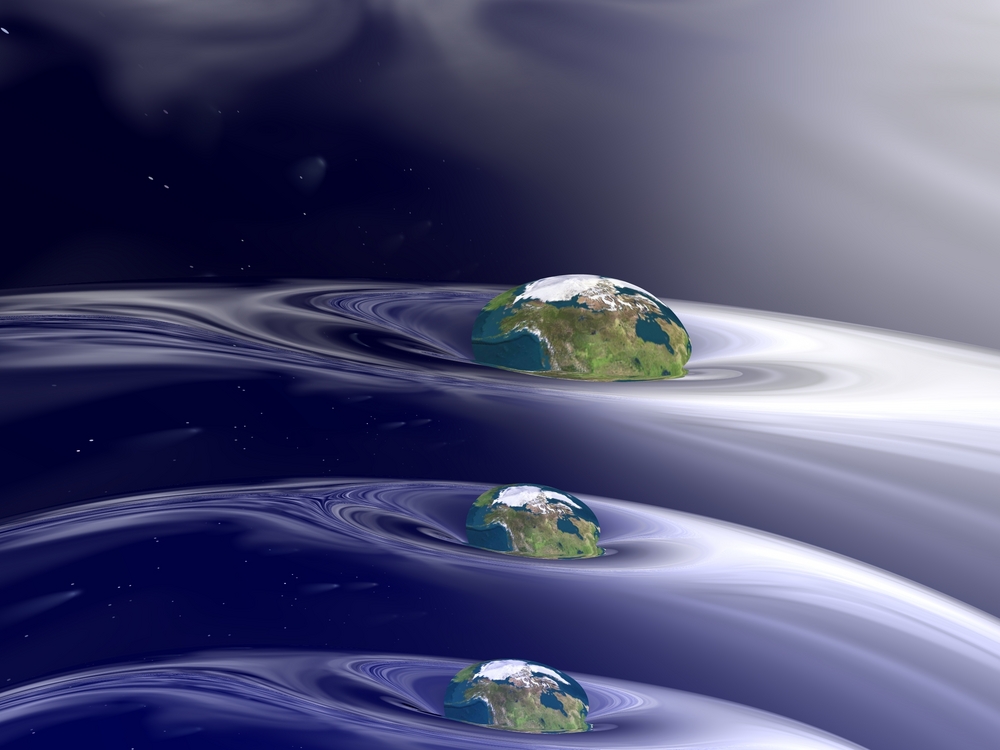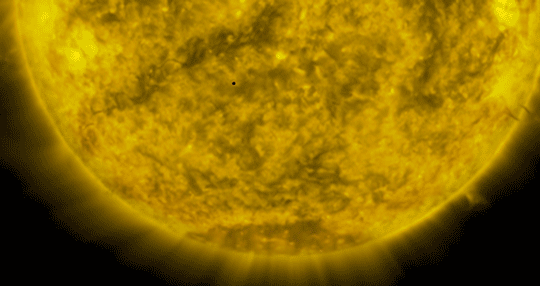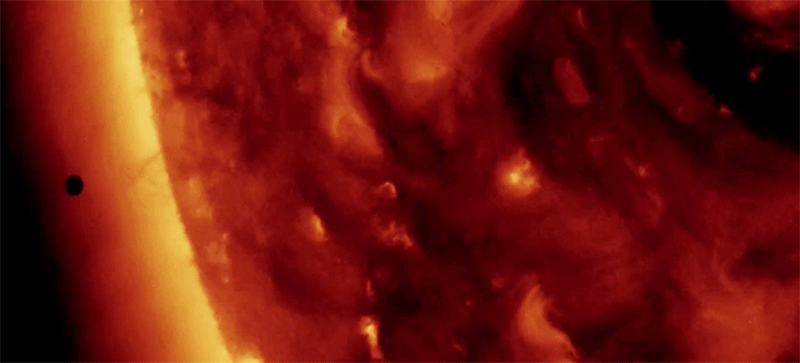I think Plait said it pretty well in the last article, "Look. I love science fiction, and superhero movies, and all that. But no matter how bizarre a story fiction tells, they can’t hold a candle to the real thing."
 |
 |
|
|||||||||||
 |
 |
||||||||||||
|
|
|
|
|
|
|
||||||||
 |
|
|
|
|
|
 |
|||||||
|
|
|
|
|||||||||||
|
|
|||||||||||||
|
|
|
|
|
|
|
|
|
|
|
|
|
|
|
Results 231 to 240 of 679
-
05-07-2016, 03:09 PM #231
-
05-07-2016, 03:20 PM #232
 FBI declassified files
FBI declassified files
this is very interesting :
I think disclosure is near. the commercials have them . the joking of it is dying down. just tell us once & for all.
now the FBI website puts stuff on there site. something is definitely up!
Code:http://www.ancient-code.com/the-fbi-admits-visits-of-beings-from-other-dimensions-declassified-fbi-document/
-
05-07-2016, 05:23 PM #233
I wouldn't say we should discount this material, but it is essentially just reports the FBI compiled from witnesses over the years and has now made public. The FBI never said they corroborated any of the material or contacted any of the entities described. It's still nice to see the witnesses' descriptions being made publicly available, however. I thank you for the post and so do the tall, partially transparent visitors who are making me type this.
Last edited by ilan; 05-08-2016 at 01:16 AM.
-
05-08-2016, 12:05 PM #234Parallel Universes: Theories & Evidence
By Elizabeth Howell, Space.com Contributor | April 28, 2016 12:18am ET
Our universe may live in one bubble that is sitting in a network of bubble universes in space.
Credit: Sandy MacKenzie | Shutterstock
Is our universe unique? From science fiction to science fact, there is a proposal out there that suggests that there could be other universes besides our own, where all the choices you made in this life played out in alternate realities. So, instead of turning down that job offer that took you from the United States to China, the alternate universe would show the outcome if you decided to venture to Asia instead.
The idea is pervasive in comic books and movies. For example, in the 2009 "Star Trek" reboot, the premise is that the Kirk and Spock portrayed by Chris Pine and Zachary Quinto are in an alternate timeline apart from the William Shatner and Leonard Nimoy versions of the characters.
The concept is known as a "parallel universe," and is a facet of the astronomical theory of the multiverse. There actually is quite a bit of evidence out there for a multiverse. First, it is useful to understand how our universe is believed to have come to be.
Arguing for a multiverse
Around 13.7 billion years ago, simply speaking, everything we know of in the cosmos was an infinitesimal singularity. Then, according to the Big Bang theory, some unknown trigger caused it to expand and inflate in three-dimensional space. As the immense energy of this initial expansion cooled, light began to shine through. Eventually, the small particles began to form into the larger pieces of matter we know today, such as galaxies, stars and planets.
One big question with this theory is: are we the only universe out there. With our current technology, we are limited to observations within this universe because the universe is curved and we are inside the fishbowl, unable to see the outside of it (if there is an outside.)
There are at least five theories why a multiverse is possible, as a 2012 Space.com article explained
1. We don't know what the shape of space-time is exactly. One prominent theory is that it is flat and goes on forever. This would present the possibility of many universes being out there. But with that topic in mind, it's possible that universes can start repeating themselves. That's because particles can only be put together in so many ways. More about that in a moment.
2. Another theory for multiple universes comes from "eternal inflation." Based on research from Tufts University cosmologist Alexander Vilenkin, when looking at space-time as a whole, some areas of space stop inflating like the Big Bang inflated our own universe. Others, however, will keep getting larger. So if we picture our own universe as a bubble, it is sitting in a network of bubble universes of space. What's interesting about this theory is the other universes could have very different laws of physics than our own, since they are not linked.
3. Or perhaps multiple universes can follow the theory of quantum mechanics (how subatomic particles behave), as part of the "daughter universe" theory. If you follow the laws of probability, it suggests that for every outcome that could come from one of your decisions, there would be a range of universes — each of which saw one outcome come to be. So in one universe, you took that job to China. In another, perhaps you were on your way and your plane landed somewhere different, and you decided to stay. And so on.
4. Another possible avenue is exploring mathematical universes, which, simply put, explain that the structure of mathematics may change depending in which universe you reside. "A mathematical structure is something that you can describe in a way that's completely independent of human baggage," said theory-proposer Max Tegmark of the Massachusetts Institute of Technology, as quoted in the 2012 article. "I really believe that there is this universe out there that can exist independently of me that would continue to exist even if there were no humans."
5. And last but not least as the idea of parallel universes. To go back to the idea that space-time is flat, the number of possible particle configurations in multiple universes would be limited to 10^10^122 distinct possibilities, to be exact. So, with an infinite number of cosmic patches, the particle arrangements within them must repeat — infinitely many times over. This means there are infinitely many "parallel universes": cosmic patches exactly the same as ours (containing someone exactly like you), as well as patches that differ by just one particle's position, patches that differ by two particles' positions, and so on down to patches that are totally different from ours.
Arguing against a parallel universe
Not everyone agrees with the parallel universe theory, however. A 2015 article on Medium by astrophysicist Ethan Siegal agreed that space-time could go on forever in theory, but said that there are some limitations with that idea.
The key problem is the universe is just under 14 billion years old. So our universe's age itself is obviously not infinite, but a finite amount. This would (simply put) limit the number of possibilities for particles to rearrange themselves, and sadly make it less possible that your alternate self did get on that plane after all to see China.
Also, the expansion at the beginning of the universe took place exponentially because there was so much "energy inherent to space itself," he said. But over time, that inflation obviously slowed — those particles of matter created at the Big Bang are not continuing to expand, he pointed out. Among his conclusions: that means that multiverses would have different rates of inflation and different times (longer or shorter) for inflation. This decreases the possibilities of universes similar to our own.
"Even setting aside issues that there may be an infinite number of possible values for fundamental constants, particles and interactions, and even setting aside interpretation issues such as whether the many-worlds-interpretation actually describes our physical reality," Siegal said, "the fact of the matter is that the number of possible outcomes rises so quickly — so much faster than merely exponentially — that unless inflation has been occurring for a truly infinite amount of time, there are no parallel universes identical to this one."
But rather than seeing this lack of other universes as a limitation, Siegal instead takes the philosophy that it shows how important it is to celebrate being unique. He advises to make the choices that work for you, which "leave you with no regrets." That's because there are no other realities where the choices of your dream self play out; you, therefore, are the only person that can make those choices happen.Last edited by ilan; 05-08-2016 at 01:31 PM.
-
05-09-2016, 11:53 AM #235Before the Transit of Mercury: forgotten forerunners of an astronomical revolution“Today I saw Mercury.” This terse remark scrawled inside a 16th-century almanac could reflect anyone watching today’s transit of Mercury across the Sun. The winding path this observation took after it was recorded, however, traces a century-long story leading through the transformation of both our understanding of the cosmos and the practice of astronomy itself.
Karl Galle (The Guardian) | Monday 9 May 2016
A manuscript note in the Royal Society Library hints at an observing program that
would eventually transform our ability to predict the motions of the planets.
Cop1.JPG
Willibald Pirckheimer notes his observation of a Transit of Mercury on 18 March 1504.
Written in the margin of astronomical tables by Johannes Regiomontanus,
now in the Royal Society Library, London, UK. Photograph: Karl Galle/Royal Society Library
Mercury’s observer in this case was Willibald Pirckheimer, a German humanist who made diary notes in a set of astronomical tables by Johannes Regiomontanus, which are now preserved in the Royal Society Library. Pirckheimer almost certainly wasn’t alone, as the same Mercury sighting (early in the evening of 18 March 1504) was recorded in more detail by his friend Bernhard Walther, who had inherited Regiomontanus’ observation program and copious manuscripts. Perhaps it was solely an observing session, or perhaps it preceded one of the festive banquets Nuremberg’s humanists were known for. We may not know the evening’s full itinerary, but it’s a reminder that science was rarely a solo activity even back then.
What we do know, however, is the probable location where the sighting was made. When Walther died three months later, his sizeable house was purchased by Pirckheimer’s best friend and fellow investigator of nature Albrecht Dürer. Today the house is a museum to Dürer’s life and art, but if you walk around back, you can still see the observation ledge for astronomical instruments that Walther constructed beneath a top-floor window.
Walther’s numerous and detailed observations, including some 746 midday solar altitudes, suggest he may have been trying to construct his own reformed model of celestial motions. Although he died before completing any theoretical work, the next generation of Nuremberg astronomers preserved his books and manuscripts – after Pirckheimer and Dürer purchased a few volumes from the estate for themselves – just as Walther had done for his mentor Regiomontanus.
The observations themselves remained unpublished until a young Wittenberg professor named Georg Rheticus visited Nuremberg in early 1539 and then set off on the long trek to Frombork, where a church canon named Nicholas Copernicus was rumored to have developed a startling new theory putting the Sun rather than Earth at the center of the cosmos. When Rheticus returned carrying Copernicus’s manuscript for the city’s most famous printer, three of Walther’s Mercury observations, including the one Pirckheimer recorded, were included in the final text. Two were incorrectly attributed to Johannes Schöner, then a caretaker for the Regiomontanus and Walther materials, but Schöner set the record straight by publishing Walther’s complete observations the following year.
From Copernicus to Kepler
Why did Copernicus even need these Mercury observations at all? In the most basic historical accounts of his new cosmological theory, he simply switched the positions of the Earth and Sun, putting our planet into motion without really rearranging the other planets. In fact, the heliocentric idea appeared first as a brief outline in his book’s opening leaves and was followed by over 350 pages of often brain-bending mathematical models for predicting the apparent motions of the Sun, Moon, stars, and planets.
Cop2.JPGThe key to making these models work was having just enough measurements of key configurations – when planets were directly opposite or at greatest elongation from the Sun, for example – to compute mean motions over time. As the closest planet to the Sun, Mercury was notoriously difficult to spot, and Frombork’s greater northern latitude made the problem worse by reducing the planet’s vertical angle above the horizon. For this reason, even three of Walther’s Mercury observations were enough to help fill out Copernicus’s model of the planet’s motions.
Copernicus’s On the Revolutions of the Heavenly Spheres (1543),
showing how early in the book his illustration
of the heliocentric system occurs. Image courtesy of the Linda Hall Library.
Photograph: Karl Galle/Linda Hall Library, Kansas City
If opportunistically using a few decades-old measurements symbolises the astronomy of Copernicus’s time, however, the imperfection of the results (after several rounds of calculations, Copernicus finally rounded Walther’s numbers upward to make them better fit his models) were a stimulation to the astronomy that followed. In the coming decades, astronomers would no longer settle for averaging a handful of key measurements, instead embarking on increasingly ambitious programs to quantify celestial positions in every nightly configuration. Walther’s simple window ledge thus gave way to ever larger instruments and observatories at Uraniborg and elsewhere.
Walther’s observations did not disappear, however. On the contrary, having accurate measurements from the more distant past remained a key part of refining the long-term accuracy of astronomical tables. The value of this quotidian grind of observing and number-crunching is often forgotten in histories that emphasize a few big ideas like heliocentrism or elliptical orbits, but nothing encapsulates its core role in early astronomy like Kepler’s nearly three decades of slaving over his Rudolphine Tables, drawing not just from Tycho Brahe’s observations at Uraniborg but from meticulous attempts to adjust Walther’s data for atmospheric refraction and stellar precession.
Walther even photobombed the famous frontispiece to Kepler’s tables displaying historical figures from astronomy. While Copernicus and Tycho occupy the image’s center, lurking just behind Copernicus’s head is a book labeled “Observations of Regiomontanus and Walther.”
Predicting Transits of Mercury
For today’s Mercury transit, the key significance of the Rudolphine Tables is that they led Kepler to predict a Mercury transit would occur on 7 November 1631. Other transit observations had been claimed in the past – including once by Kepler in 1607 – but were almost certainly sunspots instead. In this case, astronomers had time to prepare, and Pierre Gassendi spotted the planet as predicted during a break in cloudy weather.
Gassendi’s observation was a striking confirmation of how astronomical theory was becoming precise enough to predict even a small and brief event far in advance. By the time Johannes Hevelius documented another Mercury transit three decades later, he could compare six sets of astronomical tables and note that two including Kepler’s had successfully predicted the event. This revolution in accuracy was possible not from a single idea or individual but because a growing professional community, stretching across countries and generations, could compare, improve, and compete for observations whose quantity and precision would have been unimaginable when Walther and Pirckheimer looked out a Nuremberg window.
The other remarkable finding to come out of Gassendi’s Mercury transit observation was the planet’s shockingly small apparent size. He and other contemporaries grappled over why it was so much smaller than anyone expected before gradually coming to terms with its implications for cosmic dimensions.
Echoes of this recognition are part of what preserves the wonder of a Mercury transit even now when we can browse close-up images of the planet from orbiting spacecraft. No longer merely a point of light that’s difficult to spot near the horizon, we now know this tiny dot crossing the solar disc is an entire rocky world, orbiting the center of the solar system like us – and like us just a speck in the vast cosmic ocean.Last edited by ilan; 05-09-2016 at 12:02 PM.
-
05-10-2016, 06:44 AM #236
great postin ilan and great read as well alphablondy.keep up the great work.
-
05-10-2016, 12:11 PM #237Mercury Transit of Sun on 9 May 2016



Here is a nice video of the event from NASA's Solar Dynamics Observatory:
Code:https://youtu.be/AhWMOkrzKzs
~~~~~~~~~~~~~~~~~~~~
Mercury's Next Transit of the Sun on 11 November 2019
Last edited by ilan; 05-10-2016 at 02:13 PM.
-
05-10-2016, 10:32 PM #238
Cool. Thanks ilan...
 I gather darkness to please me...
I gather darkness to please me...
-
05-10-2016, 10:41 PM #239
man its crazy how man it is compared to the sun!
My software has no bugs it develops random features.
-
05-10-2016, 11:13 PM #240
And Mercury looks bigger than it actually is because it's so much closer to us (48 million miles) than is the sun (93 million miles). The ratio is nearly 2:1. Thus, Mercury appears twice as big as it really is in relation to the sun..
Last edited by ilan; 05-11-2016 at 12:59 AM.
Similar Threads
-
RCU model pics
By crazed 9.6 in forum BuzzTV RemotesReplies: 25Last Post: 01-05-2024, 10:41 PM -
BuzzTV e1 - pics
By Ryu in forum BuzzTV EssentialsReplies: 0Last Post: 02-01-2021, 01:06 AM -
Zx Pics
By Capt.Kangaroo in forum Formuler ZxReplies: 17Last Post: 09-21-2018, 02:38 PM -
This is cool pics
By Marley in forum Chit Chat LoungeReplies: 0Last Post: 03-06-2018, 06:41 PM -
Space Pics v.3
By Capt.Kangaroo in forum Deep SpaceReplies: 527Last Post: 05-25-2016, 02:09 PM







 Reply With Quote
Reply With Quote




